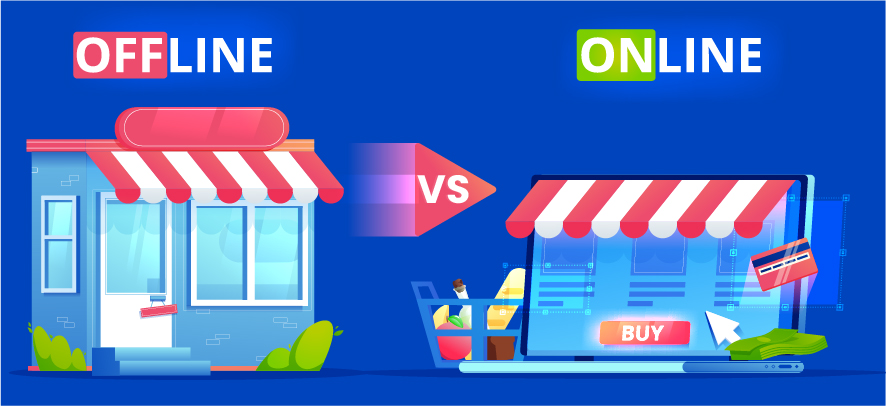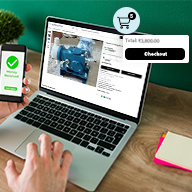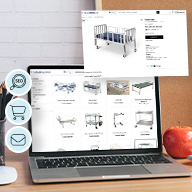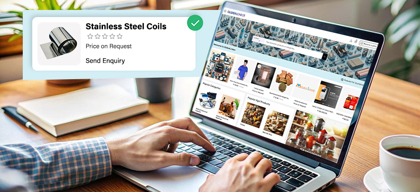Offline store vs Online store

Ecommerce
238 week ago — 6 min read
While eCommerce is growing at a faster rate, for the time being, both offline and online stores are firmly entrenched in the retail landscape. A large proportion of customers shop both offline and online.
However, there is no denying that smartphones and tablets make it easy for shoppers today to purchase goods online. Physical stores are unlikely to go extinct soon, but online shopping has altered the retail ecosystem drastically in the past decade.
For a retailer, which is the better format? Let’s compare the advantages of both.
Advantages of online stores
Lower setup and operational costs
The main advantage of an online store is its low-cost structure. You do not have to invest in costly retail space or hire store personnel, which reduces operating costs. An online store is much easier to set up compared to a physical store. An online ecosystem like Linker.store, enables you to create an eStore with no investment and hardly any technical expertise to get going. Setting up a brick and mortar store is comparatively more time consuming and expensive as one has to identify, lease/rent/ build and set up the store. Moreover, the overheads in a physical store are higher.
A lean cost structure provides more flexibility if there is a sudden decline in the market, much like we are witnessing today. Several traditional businesses (such as bookstores) have become unprofitable because they cannot compete with their online counterparts’ low-cost structure.
Scale across geographies
One of the main advantages of having an online business is that you break geographical boundaries. You do not depend on the number of people passing through your street. It is certainly worth broadening your customer base to include people outside of the local area. From the internet, you can sell to the world. The market for an offline business, on the other hand, is usually limited.
Open 24x7
A significant advantage of an online store is that it can operate 365 days a year, 24x7, sales can be made at any time, and customers can buy when it suits them.
Also read: Taking your business online: An economic necessity
Collect customer data
It’s easier to analyse customers’ buying behaviour online. Demographic data like age, gender, and other search-related behaviour can be easily ascertained with Analytics. This data greatly helps to improve the online store, products and overall customer experience. Tracking this level of data in a physical store is not possible.
Look more prominent than you are
A well-designed online store gives the impression of a much larger business for small firms when compared to a physical shop. This goes a long way in establishing trust, credibility, and a loyal customer base.
Shop safely and avoid crowds
When social distancing is becoming the norm, online shopping scores big compared to crowded offline stores. An online store allows you to shop from your home’s convenience and avoid large crowds and traffic.
Secure payment
Online stores accept all sorts of payment methods, including credit/debit cards, digital wallets, and some even allow you to pay later. These payment methods are all safe and secure, and convenient.
Advantages of offline stores
Establish a personal touch
A significant advantage of an offline store is the opportunity for customers to establish personal connections with your business, building loyalty. As you can speak to your customers, it is also an opportunity to upsell other items.
Some businesses more viable with the offline model
For many businesses, the offline model is the only viable option. For example, even though a restaurant can advertise online, the actual dining experience is offline. Similarly, a car dealership is not likely to be as effective without its sales staff walking buyers by selecting cars and even offering a test drive option.
Touch and examine
In a physical store, you get to touch and examine a variety of choices and buy the one that you like most. For many, getting to feel the product they will be buying is almost essential. It also allows you to inspect the products closely for any well-hidden damages or defects. In the case of clothes, physical stores will enable you to try out clothes for size and fitting, which is a big advantage.
Sales assistance
Imagine you just searched the entire store and found two very different, but equally great items and can’t decide which to pick. Or you are looking for a particular item that you need help locating. The in-house sales assistants can tell you about each item and help you make an informed decision.
Instant purchase
Unlike an online store, you don't have to wait for days to get the product when you purchase it in an offline store. You choose the product you like, make the payment, and take it home.
Return/replace
If you’re not satisfied with your purchase, you can always go back to the store to get a replacement or refund. No more waiting 3-5 business days for the amount to appear as a credit in your next billing statement.
So, what is the future of retail? Physical stores are not on their way out just yet. With increased internet access and smartphones, online stores are rising at a much faster pace for sure. As of now, both will co-exist, but the ability to adapt and drive future change will be a key factor in the growth and survival of both retail formats.
Also read: Don’t have a transactional eStore? Here's what you are missing out
Image source: shutterstock.com
Posted by
GlobalLinker StaffWe are a team of experienced industry professionals committed to sharing our knowledge and skills with small & medium enterprises.
Network with SMEs mentioned in this article
View GlobalLinker 's profile
Most read this week
Trending
Ecommerce 2 hours ago













Comments (1)
Share this content
Please login or Register to join the discussion